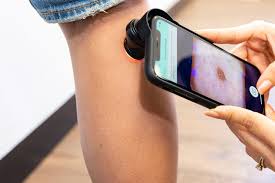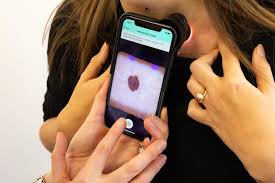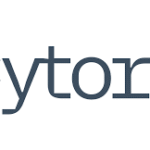Skin Analytics is a health technology company. It uses artificial intelligence for skin cancer. The company provides a unique service. It helps assess suspicious moles. Skin Analytics has a clear goal. It aims to save lives. Consequently, it is transforming dermatology. Doctors and patients use this technology. Furthermore, it makes skin checks easier. Skin Analytics improves early detection. This is crucial for skin cancer.
Skin Analytics developed an AI platform. It analyzes images of skin lesions. This analysis is done very quickly. For example, a doctor takes a photo. The AI then assesses the image. It provides a risk classification. In addition, this helps doctors decide. They can decide on the next steps. The technology is very accurate. In fact, it performs like a dermatologist. This makes it a powerful tool. Skin Analytics is a medical innovation.
The Core Technology of Skin Analytics
Skin Analytics uses deep learning AI. This is a sophisticated type of AI. It has been trained on many images. These are images of skin lesions. The AI learns to spot patterns. It identifies signs of skin cancer. As a result, it can assess risk. This assessment is highly reliable. The technology is CE marked. This means it meets EU standards. Skin Analytics provides clinical support.
Another key part is the device. Skin Analytics provides a special lens. This lens attaches to a smartphone. It allows for high-quality images. These images are called dermoscopic images. They show details the eye cannot see. Subsequently, the AI has better data. This improves the accuracy of the analysis. The process is designed for clinical use. It is simple and efficient. The platform is truly state-of-the-art.
How AI Powers Skin Analytics
Artificial intelligence is the engine. The AI in Skin Analytics is called DERM. It is a powerful algorithm. It was trained on hundreds of thousands of images. Dermatologists annotated these images. This taught the AI what to look for. Therefore, DERM can identify melanoma. It can also spot other skin cancers. The AI’s performance has been validated. This validation was done in clinical studies.
The process is very straightforward. A healthcare professional takes an image. The image is uploaded to the system. DERM then analyzes the image. It provides an immediate recommendation. The recommendation tells the doctor. It says if the lesion needs a biopsy. For this reason, it helps prioritize patients. Patients with high-risk lesions are seen faster. This can significantly improve outcomes. A lesion’s risk can be determined by DERM.
The Role of Skin Analytics in Early Detection
Early detection of skin cancer is vital. It greatly increases survival rates. Skin Analytics plays a crucial role here. It makes skin cancer checks more accessible. It can be used in primary care. This means more people can be checked. It reduces the wait time for specialists. Many benign lesions are identified by the system. This frees up dermatologist appointments. Consequently, specialists can see urgent cases sooner.
Furthermore, Skin Analytics helps patients. It gives them faster peace of mind. Or, it accelerates their treatment path. Waiting for a specialist can be stressful. Skin Analytics shortens this waiting period. It provides a quick and accurate assessment. This improves the patient experience. The service empowers primary care doctors. They can manage skin concerns better. In short, Skin Analytics saves time and lives.
The Implementation of Skin Analytics
Skin Analytics partners with healthcare systems. It works with organizations like the NHS. The goal is to integrate its service. To integrate it into existing care pathways. This makes the technology available. It is available to many patients. The implementation process is collaborative. Skin Analytics works closely with clinics. It provides training and support. This ensures a smooth rollout.

The service can be set up quickly. Clinics receive the necessary equipment. This includes the smartphone and lens. Staff are trained on how to use it. They learn how to take good images. They also learn to use the platform. The system is designed to be user-friendly. Because of this, adoption is high. Clinics can start using it quickly. They see the benefits almost immediately. Patients are managed more efficiently with Skin Analytics.
Skin Analytics in Primary Care Settings
Primary care is the first stop. It is the first stop for most patients. GPs see many skin concerns. It can be hard to know which are serious. Skin Analytics provides a solution. It gives GPs a powerful tool. They can assess suspicious moles confidently. They can take a dermoscopic image. Then, they get an AI recommendation. This helps them make better decisions.
This has a huge impact. It reduces unnecessary referrals to dermatology. Many referrals are for benign lesions. Skin Analytics helps filter these out. This saves time and resources. It also reduces patient anxiety. They get answers faster in primary care. Therefore, the whole system becomes more efficient. Skin Analytics strengthens the role of GPs. It helps them provide better skin care.
Skin Analytics and Teledermatology
Teledermatology is rapidly growing in importance. Essentially, it involves providing remote dermatology care. In this context, Skin Analytics is perfect for this model. Specifically, it allows for high-quality remote assessments. For instance, a nurse can take an image. After that, a GP can review it with the AI. Furthermore, a dermatologist can even review it remotely. As a result, this flexibility becomes a major advantage. Consequently, it makes dermatology more accessible. Ultimately, patients in remote areas can benefit significantly.
This model is also very efficient. It reduces the need for in-person visits. This is convenient for patients. It also saves the healthcare system money. For instance, travel costs are reduced. Clinic space is used more effectively. Skin Analytics is a key enabler. It is a key enabler of modern teledermatology. It supports new and better care models. Indeed, it is shaping the future.
The Benefits of Using Skin Analytics
Using Skin Analytics has many benefits. First, it improves patient outcomes. Early detection leads to better survival rates. Skin Analytics finds skin cancers earlier. Second, it increases efficiency. It reduces unnecessary dermatology referrals. This saves the healthcare system money. It also frees up specialist time. Dermatologists can focus on complex cases.
Third, it improves the patient experience. Patients get answers more quickly. Their anxiety is reduced. The process is more convenient. Fourth, it supports healthcare professionals. It gives them confidence in assessing skin. This is especially true for GPs. Skin Analytics is a valuable assistant. In conclusion, it benefits everyone involved. It is a win-win for healthcare.
Improving Patient Outcomes
Patient outcomes are the top priority. Skin Analytics makes a real difference. Melanoma is a dangerous skin cancer. If caught early, it is treatable. If it spreads, it can be fatal. Also it helps catch it early. The AI is trained to spot melanoma. It is highly accurate in its assessment. This means more cancers are found. They are found at an earlier stage.
This leads to more successful treatments. It ultimately saves lives. This is the most important benefit. The technology has been proven effective. Clinical trials show its high accuracy. Healthcare providers can trust the results. Patients can be confident in the care. Skin Analytics provides a safety net. It ensures suspicious lesions are not missed. This impact on health is profound.
Economic Advantages
The economic case is also strong. Skin Analytics delivers significant savings. Healthcare systems are under pressure. They need to be more efficient. It helps them achieve this. It reduces the number of referrals. Many referrals to dermatology are unnecessary. They are for harmless skin spots. Skin Analytics identifies these spots. This avoids a costly specialist visit.
The cost of a Skin Analytics assessment is low. It is much lower than a dermatologist appointment. The savings can be substantial. These savings can be reinvested. They can be used for other services. Moreover, early cancer treatment is cheaper. Treating advanced cancer is very expensive. By finding cancers early, it saves money. This makes a smart investment. It offers a great return for healthcare.
The Impact of Skin Analytics
In summary, Skin Analytics is revolutionary. It is changing how we screen for skin cancer. It uses powerful AI to assess risk. This technology is accurate and reliable. It supports doctors and helps patients. It makes early detection possible. This is possible on a larger scale. Its mission is to end deaths from melanoma.
The company is making great progress. Its technology is being adopted. It is being used in real-world clinics. The benefits are clear and proven. It improves outcomes and efficiency and enhances the patient experience. It is more than a tool and a new standard of care. An image of the future of dermatology. Ultimately, Skin Analytics is saving lives.
READ MORE; Innovation of redefine-meat….






